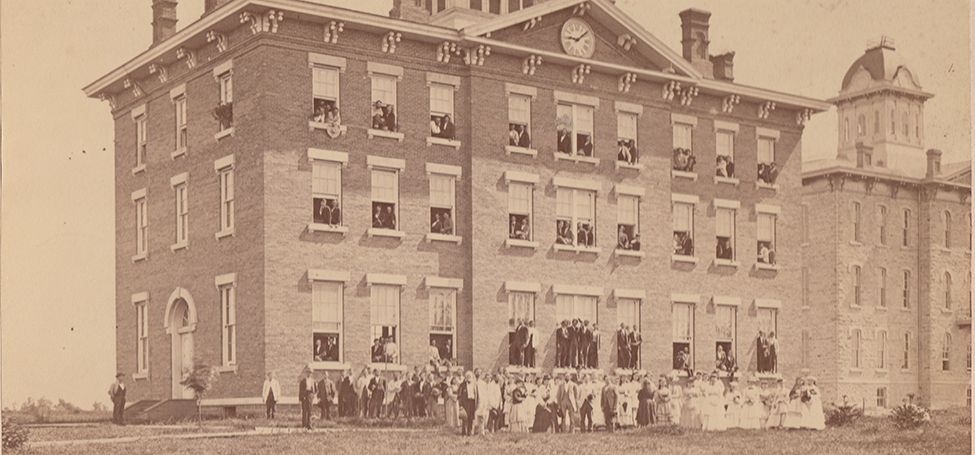
A Brief History
I never knew I was a member of something called the Grinnell College Alumni Association. I became a member after completing my first semester, as does everyone who completes 16 credits at Grinnell.
In 1879, with fewer than 100 people qualifying, the alumni of Grinnell College first organized themselves. It was a small group since graduating classes averaged around 20 students. In 1880 Robert M. Haines 1865, one of the first grads of what was then Iowa College after it moved to Grinnell, was elected president of the association. History does tend to repeat itself. The 2019–20 president of the association will be Ryann Haines Cheung ’93, a descendant of that important Grinnell clan.
From its inception, the alumni association has played a critical role in the life of the College. Historically, trustees of the College were either chosen from the ranks of the association or actually elected by the alumni. The association has also had local chapters in Chicago, southern California, and New York for more than a century. Of course, then as now, the alumni were routinely solicited for contributions to important initiatives on campus. Alumni Recitation Hall was named for the hundreds of alumni who gave for its construction.
Early on, membership in the alumni association only included those who had completed their Grinnell degree. By the early 20th century, folks began to recognize that the impact of a Grinnell education was indelible, so membership in the alumni association also went to those who had attended but not graduated. That includes approximately 1,200 soldiers who spent time on campus during World War II.
Women have always played a very important role in alumni affairs. The first alumna to serve a full term as a trustee was Mary Chamberlain 1892, 1913–17. Nonetheless, the direction of the College and alumni association remained firmly in male hands for a few more generations. Multi-generational Grinnell families, where mom and dad met at Grinnell, also became common. In 1915 a “chips” club was formed for children of alumni; it had 26 eligible students that year. Over the years, the number of chip has risen and fallen, with a maximum of about 12 percent of entering first-year students.
The modern alumni association took shape in 1929, at the 50th anniversary of its founding. A new set of bylaws was passed, goals developed, and a mission crafted. These remain the guiding documents for the association. In 1929, the College appointed the first official alumni secretary to serve as the liaison between the College and the association.
An important responsibility of the alumni association was the recruitment of students for the College. Initially this occurred within the context of the Congregational churches of Iowa and the upper Midwest, but as the College became secular, the alumni began to serve as active recruiters. Now, alumni in the Grinnell Regional Admissions Support Program (GRASP) assist professional admission officers.
In good times and bad, financial success or disaster, in war and peace, the Grinnell College Alumni Association has continued to link the alumni to the College and encourage fellowship among all alumni.
